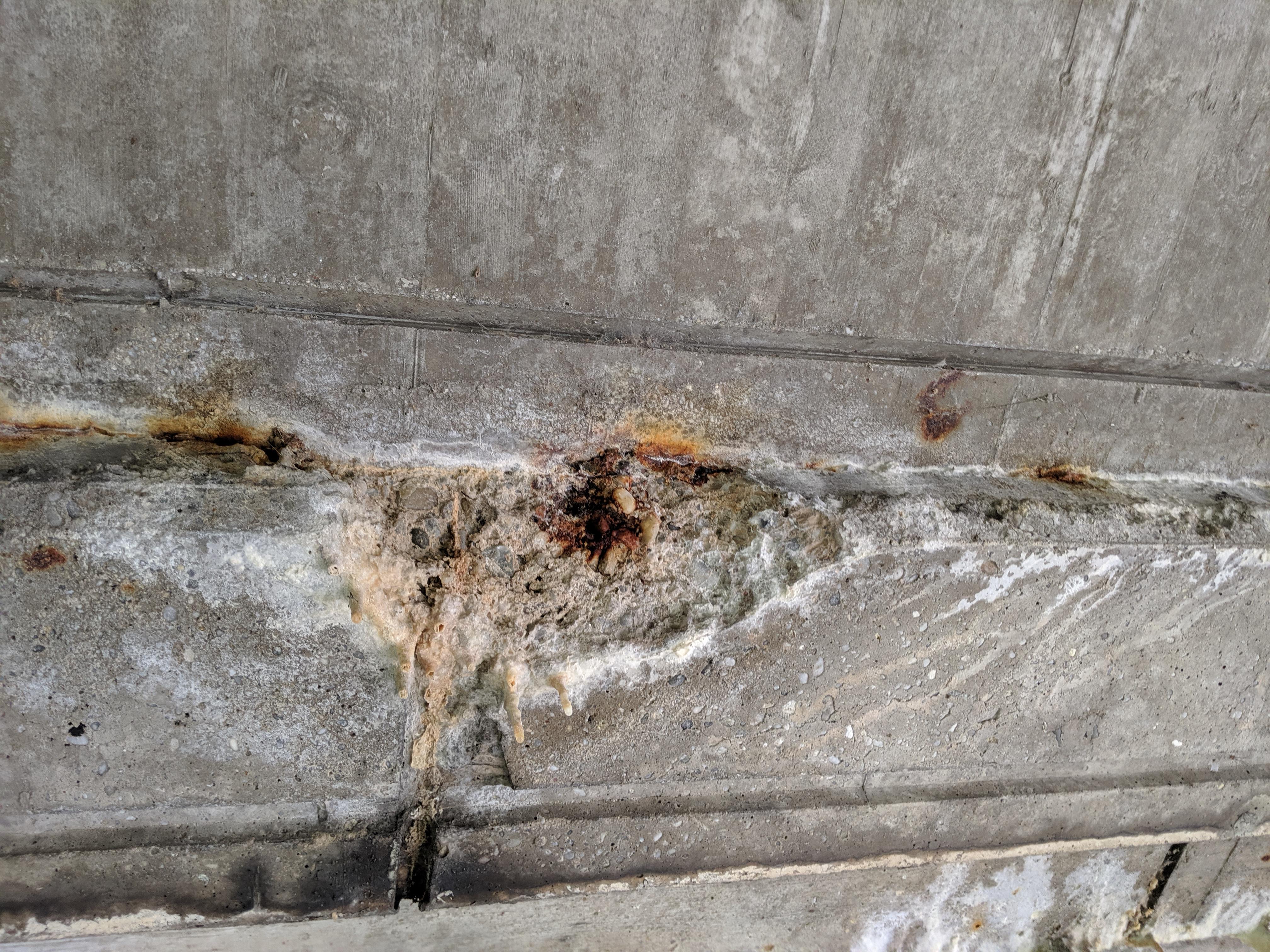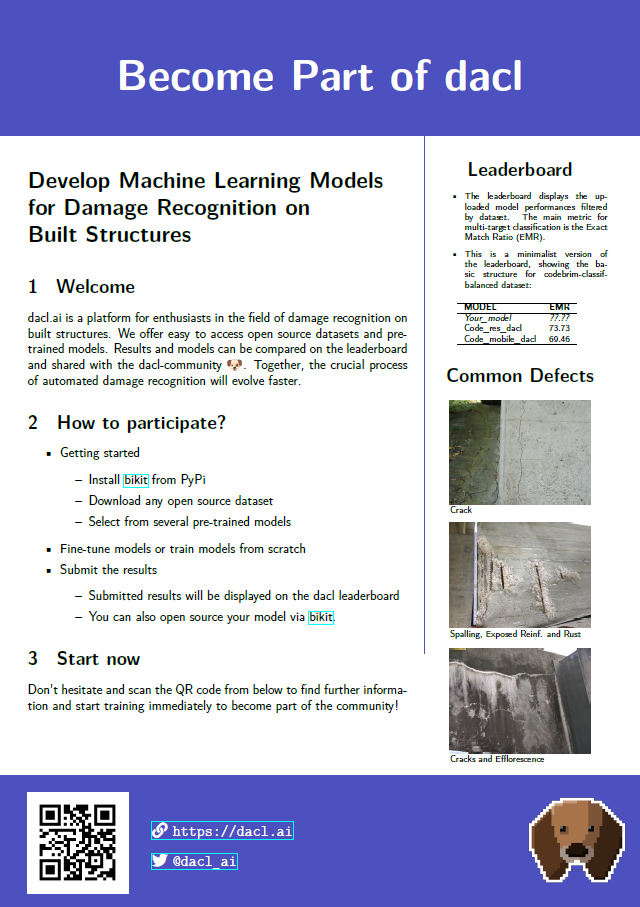dacl-demo is a tutorial repo to demonstrate how to use baselines from bikit or rather dacl.ai for inference in order to tackle the problem of damage recognition on built structures together.
bikit is a simple to use data hub containing relevant open-source datasets in the field of damage recognition. The bikit's datasets are enriched with evaluation splits and predefined metrics, suiting the specific task and their data distribution. The according paper is available here.
dacl.ai provides a leaderboard and the most important metrics for the baselines in this field. In addition, it endorses damage recognition enthusiasts to train models on available data by themselves and to submit the results. Also, check out the poster.
As soon as you have installed the requirements listed in requirements.txt you can unleash the whole dacl power inside the jupyter notebook demo.ipynb. Inside the notebook every step will be explained in detail.
Feel free to load different images into the DamageExample directory and evaluate the dacl models on your own data!
Examples of images representing detectable damage with available dacl-models. Crack (Top left); Spalling, Effloresence, Rust (Top right); Crack, Efflorescence (Bottom left); Spalling, Effloresence, BarsExposed, Rust (Bottom right)
The available models are displayed in the table below. They are sorted according to the Exact Match Ratio (EMR), which is the most important metric for multi-target classification. Further information reagarding the models and the metrics may be found on dacl.ai and the bikit-paper.
| Modelname | Dataset | EMR | F1 | Tag | Checkpoint | CorrespNameOnBikit* |
|---|---|---|---|---|---|---|
| Code_res_dacl | codebrim_balanced | 73.73 | 0.85 | ResNet | Code_res_dacl.pth | CODEBRIMbalanced_ResNet50_hta |
| Code_mobilev2_dacl | codebrim_balanced | 70.41 | 0.84 | MobileNetV2 | Code_mobilev2_dacl.pth | CODEBRIMbalanced_MobileNetV2 |
| Code_mobile_dacl | codebrim_balanced | 69.46 | 0.83 | MobileNet | Code_mobile_dacl.pth | CODEBRIMbalanced_MobileNetV3Large_hta |
| Code_eff_dacl | codebrim_balanced | 68.67 | 0.84 | EfficientNet | Code_eff_dacl.pth | CODEBRIMbalanced_EfficientNetV1B0_dhb |
| McdsBikit_mobile_dacl | mcds_bikit | 54.44 | 0.66 | MobileNet | McdsBikit_mobile_dacl.pth | MCDSbikit_MobileNetV3Large_hta |
| McdsBikit_eff_dacl | mcds_bikit | 51.85 | 0.65 | EfficientNet | McdsBikit_eff_dacl.pth | MCDSbikit_EfficientNetV1B0_dhb |
| McdsBikit_res_dacl | mcds_bikit | 48.15 | 0.62 | ResNet | McdsBikit_res_dacl.pth | MCDSbikit_ResNet50_dhb |
*CorrespNameOnBikit displays the name which you can utilize to download the model via bikit. For further information about how to get the baselines from bikit check out the Models section in the README of bikit.
├── assets
│ └── *.jpg # example images
├── cat_to_name.json # Contains labels for each dataset
├── demo.ipynb # Main code
├── LICENSE
├── models
│ └── *.pth # checkpoints
├── README.md
└── requirements.txt
Check out the original poster here!




